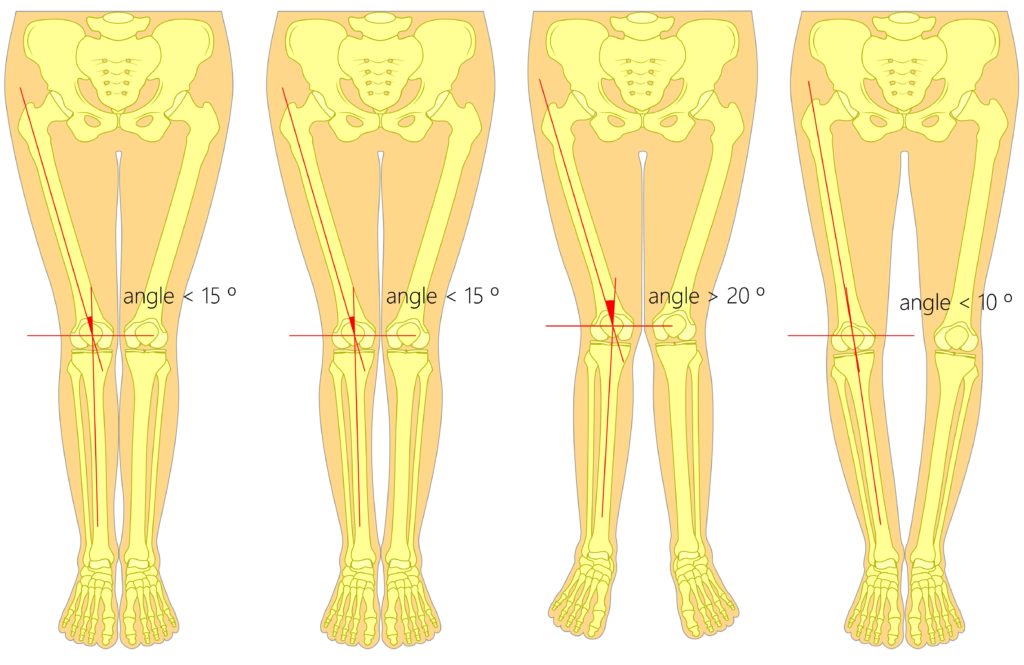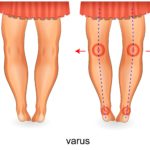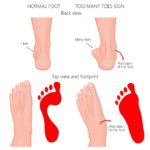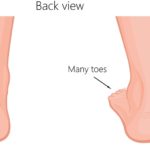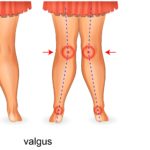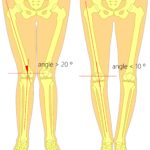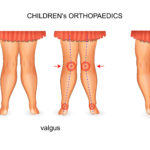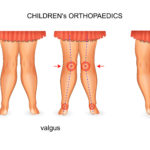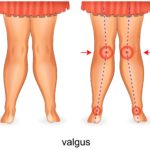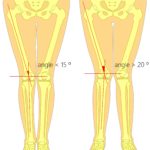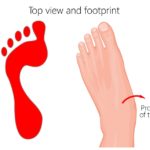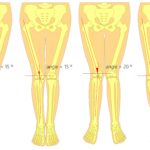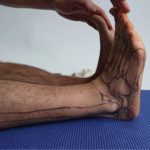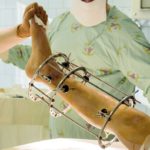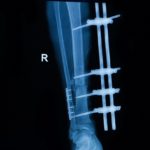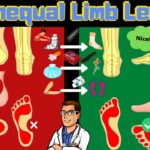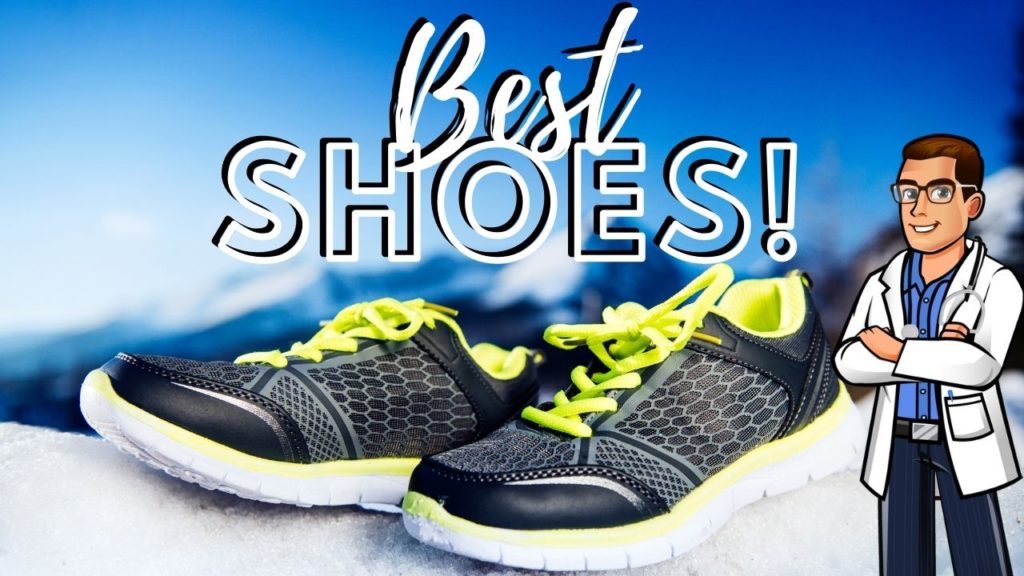Best Shoes & Best Insoles
Unequal Leg Length Discrepancy Treatment [Fix Back, Hip & Knee Pain]
Do you have an unequal leg length discrepancy? We review unequal leg length symptoms, causes & treatment for back pain, hip pain & knee pain!
Table of Contents
Unequal leg length symptoms causes treatment video:
Unequal leg length discrepancy treatment video summary:
🦶Do you have one leg longer than the other? Uneven hips? Hip misalignment? Or unequal leg length? We review leg length discrepancy and the BEST treatment!🦶
- There are 2 types of leg length discrepancy: a functional leg length discrepancy and an anatomical leg length discrepancy.
- We review leg length discrepancy exercises, leg length discrepancy shoes, leg length discrepancy symptoms & how to use a shoe lift for leg length discrepancy.
0:00 Leg length discrepancy LLD diagnosis & treatment
0:41 Uneven hips, hip imbalance & hip misalignment symptoms
1:03 knee pain caused by hip alignment
1:28 One leg longer than the other
2:09 One leg shorter than the other
2:38 One leg bigger than the other
3:25 How to measure leg length,
4:14 Scoliosis hip pain and uneven hips
4:30 What causes one leg to get bigger than the other
5:47 how top fix uneven hips
6:13 Hip misalignment & one hip higher than the other
6:34 leg shortening surgery, can you get surgery to get shorter
7:47 leg length discrepancy exercises
9:19 unequal leg length treatment & uneven legs treatment
10:07 one leg shorter than the other shoes
11:20 Best insoles for short leg syndrome
11:58 Best custom orthotics for the leg length difference
12:45 Best ankle braces for hip misalignment symptoms
13:01 Best shoes for hip imbalance & one leg in one leg out
13:29 Misaligned pelvis & hip misalignment treatment
14:08 uneven hips exercises & uneven knees exercises
What Is Unequal Leg Length & Unequal Length of Legs?
Unequal leg length, also known as LLD (Leg length Discrepancy), is defined as a condition in which there is a difference between the length of legs because thigh bone (femur), shinbone (tibia or fibula), or both are shorter in one leg.
The difference can range from 1cm to 6cm or more. A difference of 1cm and less is prevalent and insignificant. Variation as small as 2cm causing postural abnormality can be compensated by hip/pelvis. Greater variation may require surgical treatment.
Growth plates are areas of cartilage located near the end of the bone and determine the length and shape of mature bones. In long bones, the growth of bone doesn’t occur from the center outwards. Instead, it occurs around the growth plate. Damage to the growth plate may result in leg-lengthening or shortening due to a faster or slower growth rate than the opposite leg.
LLD can affect walking and posture, leading to functional scoliosis (abnormal lateral curvature of the spine), hip, knee, and ankle problems.
What are the types of leg length discrepancies?
LLD can be divided into 2 broad categories:
1. Structural leg length discrepancy:
It is due to the shortening of either thigh bone or shin bone in one leg. It may be due to:
- Congenital causes:
- Idiopathic developmental abnormalities at birth
- Acquired causes:
- Bone trauma
- Bone fractures
- Bone injuries
- Bone infections such as osteomyelitis damages the growth plate resulting in LLD
- Bone/orthopedic degenerative diseases such as Juvenile arthritis, which is an autoimmune disorder that causes joint damage and may result in LLD
- Bone tumors and their treatment, such as radiation exposure of the growth plate
- Growth plate injuries
- surgical disorders such as joint replacement.
2. Functional leg length discrepancy:
Leg bones are equal in length without any significant difference. It is caused by the abnormal posture of hip, knee, ankle, or foot due to altered:
- Limb/foot biomechanics
- Joint contracture
- Laxity of ligaments
- Mechanical axis mal-alignment either static or dynamic
- Muscle shortening or weakness
- Neuromuscular conditions alter posture and alignment, leading to functional LLD
- In children, LLD occurs due to alteration in the hip alignment
- In adults, arthritis or chronic pain may be the cause of LLD
- Athletes may experience functional LLD due to exercises that can cause muscle imbalance or weakness
Unequal leg length symptoms & signs?
Suppose a child is born with Unequal leg length. In that case, it may be noticeable at birth but becomes obvious as the child grows, begins to crawl, or walk depending upon the cause. In contrast, other illnesses or injuries that cause a discrepancy in leg length take time to develop. The slight discrepancy in leg length may go unnoticed, but a significant difference becomes obvious and may develop complications.
Signs and symptoms depend on:
- Age
- Cause
- severity of LLD
A person may develop:
- Unequal leg length: mostly of thigh(femur), shinbone(tibia), or rarely Fibula(small bone in the lower leg) may also be affected.
- Walking difficulty in a child: which can cause gait issues such as limping, waddling, or walking on tiptoes of the shorter leg
- Difficulty in rotating leg, running, playing, or daily life activities
- Easy fatiguability: due to overexertion by the shorter leg
- Pain in hip, back, knee or ankle.
- Abnormal posture due to hyper-extension of shorter leg and bending (hyper-flexion) of the longer leg
- Daily life activities may also be disturbed, such as riding a bike, driving a car, standing or sitting upon a chair, etc.
Unequal leg length causes:
There are many causes for a leg length discrepancy and can be divided into 3 broad categories:
- Those that shorten the leg, such as:
- Congenital growth deficiencies
- Infections of the growth plate
- Tumors and treatment
- Fractures
- Those that lengthen the leg, such as:
- Vascular malformations such as hemangiomas
- Wilm’s tumor (involving the kidney)
- Septic arthritis
- Healed fractures
- Bone surgeries
- Those that alter the limb mechanics, such as hip imbalance.
- Pelvic tilt
Another classification of unequal leg length causes is:
Congenital causes:
- Fibular hemimelia: when the baby is born with the short or missing shinbone
- Proximal femoral focal deficiency: when the baby is born with the short or missing thigh bone
- Tibial hemimelia: when the baby is born with short or missing shin b
- Congenital femoral deficiency
- Hemihypertrophy: when one side of the body grows more than the other
- Limb hypoplasia: underdevelopment of limb
- Limb dysplasia: affecting limb development and growth such as:
- Neurofibromatosis
- Multiple hereditary exostoses
- Ollier disease
- Unilateral clubfoot
Paralytic disorders:
- Cerebral palsy(spasticity)
- Poliomyelitis
Growth plate(physis) disruption:
- Bone fractures can cause malunion or non-union of the bone.
- A broken bone can grow faster or slower, causing longer or shorter legs than the other leg. This is likely to happen if:
- Compound fracture: when a bone is broken into several pieces
- Open fracture: when fracture exposes the bone or
- When skin and muscle are severely injured around the fractured bone.
- Bone infections affect the growth plate, especially in infants.
- Joint inflammation such as juvenile idiopathic arthritis.
- Disruption of the growth plate.
- Bone tumors or in response to the treatment of tumor such as Radiation exposure.
- Idiopathic: when no possible cause is identified.
Functional unequal limb length discrepancy pictures:
Unequal leg length back pain:
- Back pain: unequal leg length affects the lumbar spine, pelvis/ hip tries to adjust the imbalance caused by LLD, which causes back pain.
- We see unequal leg length back pain very commonly with functional leg length discrepancy. It is very common to have back pain.
- This can be treatable with a gait analysis as well as a podiatrist biomechanical examination.
Unequal leg length after hip replacement:
- Leg Length Discrepancy After Total hip Replacement / Arthroplasty
- The patient may experience:
- pain due to imbalance in muscle forces between knee, hip joint, and around the spine.
- Fatigue due to flexion(bending) of the knee in the longer leg to level the pelvis
- Dislocation
Unequal leg length hip pain treatment:
- Treatment includes:
- Patient education
- Reassurance that it would resolve within 6 months after surgery
- Physiotherapy
- Temporary shoe lift
How is leg length Discrepancy diagnosed?
In children, LLD is suspected by parents, school teachers, or a pediatrician.
A simple test can be done at home to demonstrate any discrepancy in the leg length, which later can be confirmed by a medical professional.
At Home leg length discrepancy test:
Leg length discrepancy can be demonstrated at home by:
- remove all footwear, including shoes and socks
- make the person lie down on the floor with legs straight
- An assistant should place palms of hands on a person’s hip bone.
- Now move the person’s hip gently from side to side for 60 seconds to loosen up tight muscles.
- Measure the distance from hip bone to ankle bone to find out any discrepancy.
When to see a podiatrist?
If a child experiences pain, toe-walking, difficulty crawling, walking, running, or playing, or has abnormal posture. Medical aid is necessary.
If a person has pain, poor posture, unequal leg length, or difficulty carrying daily life activities, seek the help of a doctor.
Whom to see?
A physician, orthopedic pediatrician, or podiatrist can treat LLD. But podiatrists are of choice as they are uniquely qualified and specifically trained in treating all such conditions.
At hospital:
History:
The medical professional takes detailed information of the patient, including the history of:
- Any congenital disease
- Neuromuscular disease
- Overall health
- Previous medical history
- Previous bone disease/injury/surgery
- Previous bone fracture
- Any history of radiation exposure
- Evaluation of child’s growth charts
- Puberty/age of menarche.
A complete understanding of all these factors is a must to advise a treatment plan and prognosis of the condition and to identify potential complications before, during, and after the surgery.
Examination:
The discrepancy in leg length is first evaluated clinically, and imaging studies confirm the diagnosis.
Physical examination:
- Observation when the patient is sitting, standing, walking, or moving
- Gait analysis because most of the time, people with LLD compensate by either flexing(bending) the knee of the longer leg or by walking on toes in the shorter leg
- Evaluation of contracture on hip, knee, and ankle: because
- Hip adduction( movement of hips towards each other) contracture produce a short limb
- Hip abduction( movement of hips away from each other) contracture produces functionally long limbs.
- Hip and knee flexion(bending) contracture lead to the short limb
- equinus (upward bending motion of ankle joint is limited) contracture cause longer limb
- Evaluation of joint stability: (hip, knee, and ankle joints)
- Congenital femoral deficiency causes hip and knee instability
- fibular hemimelia causes ankle instability
- Evaluation of any bone deformity: It affects the measurement of LLD and the required correction to be performed.
- Block testing: It is the best initial screening method. The patient stands in this test, and blocks are added under the shorter leg until the hip/pelvis is leveled. The added blocks are measured to find the total variation in leg length.
- Tape measurement: measurement with a tape from the pelvis(anterior superior iliac spine) to ankle( medial malleolus) to find the discrepancy in leg length
Imaging studies:
- X-rays: of both legs to determine bone age/ skeletal maturity or how much growth is still left.
- EOS imaging: With the child in a standing or upright position, EOS Images are obtained, 3D models from two flat images.
- Scanography:
- it measures discrepancy with a single exposure of both limbs from a distance of 2m, from hips to ankle in standing or supine position
- It uses a series of three images and a ruler to measure the length of leg bones.
- It can’t access angular deformity or foot height discrepancy
- Ortho-radiography:
- It allows the evaluation of both LLD and angular deformity on a single film.
- Blocks are placed under the short limb so that the pelvis is leveled. Foot deformity can also be accessed via this method.
- CT scan is the most accurate diagnostic test for contracture of the hip, knee, ankle, or any bony deformity.
- cross-sectional images are obtained to examine the bone and soft tissue and evaluate LLD
- MRI(magnetic resonance imaging) is ordered when detailed images of bones, joints, and soft tissue are required or any structural abnormality is present.
While the child grows, these studies might be repeated by a doctor twice a year to determine the effect of growth on leg length discrepancy( whether the variation is increasing or remains the same)
Unequal leg length treatment:
Treatment of leg length Discrepancy depends upon:
- Size of LLD
- Age of patient
- Bone maturity
- Causative factor for LLD
Assessment of severity:
0-2cm: No treatment
2-6cm: Shoe lift, Epiphysiodesis, Shortening
5-20cm:Lengthening
>20cm: Amputation and Prosthesis
Bone maturity:
Generally, female bone maturity is complete by the age of 14, and in males, it closes by the age of 16. But imaging studies can be done to find out the years of growth left.
Treatment of Functional Leg Length Discrepancy:
- Massage
- Strengthening and Stretching exercises to correct muscle weakness, imbalance, and poor posture
- Physiotherapy
Treatment of Structural Leg Length Discrepancy:
Treatment can either be non-surgical or surgical, depending upon the age and severity of the discrepancy.
1-Non-Surgical:
- Observation: for a period of 6-12 months in growing children to determine the effect of growth on legs (whether the difference is increasing or is remaining the same)
- Orthotics:
- Such as shoe-lift fitted to the inside or outside of the shoe if LLD is less than 2cm.
- It relieves back pain and poor gait caused by the shorter leg by leveling the hip.
- If LLD is more than 2cm, the ankle-foot orthotic can be added for joint stability.
- It is a great alternative to surgery.
2-Surgical:
Surgery aims to:
- To stop or slow down the growth of the longer limb
- To Lengthen the shorter limb
- To Shorten the longer limb
1-Shortening of longer leg:
- Limb shortening is recommended when skeletal maturity is reached, or LLD is from 2cm to 6cm.
- In this procedure, a section of bone from the middle of the long bone is removed, and metal plates, rods, and screws are inserted to stabilize the bone during the healing process.
- Insignificant LLD is contraindicated as shortening the leg would weaken the muscles.
2-Slow or Stop the growth of longer limb: to allow catch up of shorter leg/ Epiphysiodesis
- This procedure can be done in the thigh bone, shin bone, or both to reach equal leg length by the time skeletal maturity is complete and when a discrepancy is only 3-4cm.
- This procedure is carried out under X-ray guidance by making small incisions. The growth plate may be destroyed by scraping or placing metal plates around the growing region of bone, halting the growth temporarily or permanently of the longer leg. This allows the leg length variation to decrease with time as the opposite leg grows and catches up.
- Follow-up with the doctor is required every 3-4 months to measure the length difference and determine the appropriate time for removing metal plates once the difference evens out. After achieving appropriate correction of length, the child can resume normal growth.
- Disadvantages of this procedure are:
- Irreversibility of the procedure
- Slight over or under-correction
- Short stature
- Because of shortened legs, the body may look slightly disproportionate.
3-Lengthening of shorter leg/Osteotomy:
- It can be performed at any age when LLD is significant, i.e., >5cm. if
- It may be external fixation or internal fixation to lengthen the shorter bone.
External fixation :
- It is a traditional and successful method
- ALengthening starts after a week of surgery by manually turning a dial on the fixator several times a day. The shorter leg is cut to form two segments during the procedure, and a frame is connected to the bone with wires or pins. This increases the space between the cut end of bones, leading to the slow growth of new bone and soft tissue in the space between segments of bone. Lengthening is about 1mm a day and a total of 1inch per month.
- Factors such as age, health, smoking, rehabilitation, etc., play a role in determining the total time required to even out the lengths.
- Complications of this procedure can be:
- Infection at the site of wires and pins
- Slight over or under-correction
- Adjacent Joint stiffness
Internal Fixation:
- Internal fixation is considered when the patient is non-compliant or daily manual turning the dial is cumbersome.
- The doctor cuts the bone in the shorter leg in this procedure, and a metal rod is implanted in the intramedullary canal. It may be expandable or controlled externally by a magnet remote control. The rod provides stability and alignment to the bone as it lengthens. The bone slowly grows into the space along with the soft tissue. The leg is lengthened by ¼ mm, four times a day.
- Advantages of this process are:
- Less risk of infection due to internal fixation
- No Physical and psychological stress as in external fixation
- Disadvantages include:
- The lengthening process is controlled less precisely
Both the methods of lengthening the leg, whether internal or external, can take several months to complete.
- Lengthening in the short bone can often be combined with a shortening procedure on a long bone.
4-Physeal bar excision:
- It is advised when bone maturity isn’t yet complete with at least 2 years left if bone maturity isn’t yet complete and at least 2 years are left, and bony bridge involves less than 50% of physis(bone growth area)
5-Amputation and prosthetic fitting:
- It is recommended in a non-reconstructable limb with more than 20cm of LLD.
- Depending upon the bone involved, above-knee prosthesis or below-knee prostheses are recommended.
What are Post-Surgery Protocols to be followed?
After the surgery:
- Parent education and reassurance is a long process
- Regular follow-up visits to the doctor
- Counseling regarding compliance after surgery in which there’s Limitation of certain activities and range of motions
- Home exercises
- Physiotherapy and rehabilitation to rebuild strength, endurance, and coordination of both legs.
What are the Complications of surgery?
- Infection at the site of pins in case of external fixation
- Surgical wound infection
- Bone fractures
- Delayed union of bone
- Premature cessation of lengthening
- Persistent limb length discrepancy
- Joint dislocation/subluxation
- Mechanical axis deviation
- Angular deformity
What are the Complications of Leg Length Discrepancy?
- Back pain: unequal leg length affects the lumbar spine, pelvis/ hip tries to adjust the imbalance caused by LLD, which causes back pain.
- Stress fractures: Longer leg bears more bodyweight than the shorter one, resulting in stress fractures of thigh(femur), shin( tibia), or foot(metatarsals) bones
- Osteoarthritis: asymmetry of joint angles may lead to osteoarthritis in the lumbar spine
- Functional Scoliosis: abnormal lateral curvature of the spine due to obliquity of pelvis
- Abnormal gait due to pelvic imbalance or significant LLD
- Contractures formation
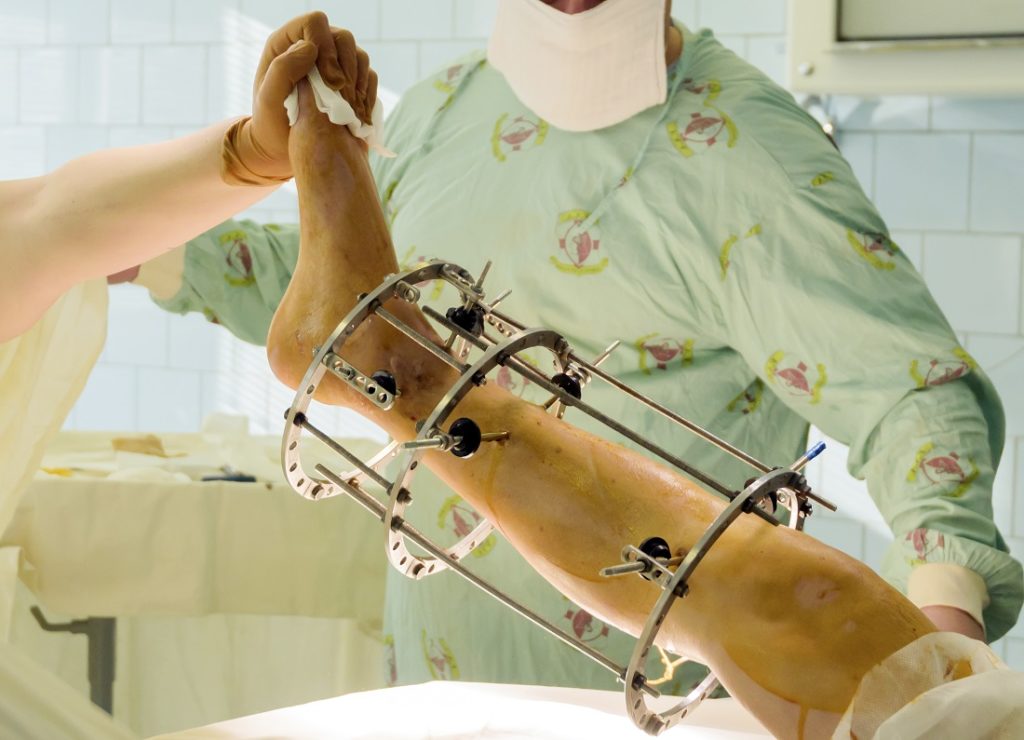
How to fix a functional unequal leg length discrepancy:
Non-surgical interventions manage functional leg length discrepancies. It involves physical therapy. These include;
- Stretching the muscles of your lower extremities.
- Lower limb exercises that strengthen different muscle groups.
- Watch the video above for leg length discrepancy exercises.
Unequal leg length discrepancy shoes:
Shoe lift for unequal leg length discrepancy:
This can be done as shoe inserts (up to 20mm correction) or by building up the sole of your shoe (up to 30 – 60mm correction) in the shorter leg.
Shoe lifts must be done in small increments and should be gradually implemented.
Custom shoe lifts can be designed with a prosthetist or a podiatrist to help address the functional change.
Click here for our favorite motion control shoes for limb length discrepancy changes.
